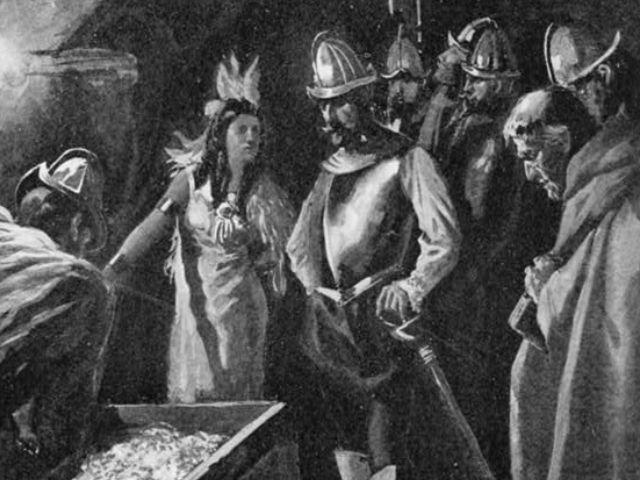
An illustration by George Gibbs depicting The Lady of Cofachiqui, chief of her village, showing Hernando de Soto and his soldiers contents in treasure chest. Image from Library of Congress.
(1540) The leader of a powerful chiefdom, the “Lady” of Cofitachiqui encountered Hernando de Soto and his conquistadors in 1540 as they passed through her territory (probably near the modern town of Camden). Narratives by the Spanish, including Garcilaso de la Vega, portray the encounter as a chivalrous and romantic one, in which the Lady formed a pact of friendship and peace with de Soto by offering him a magnificent strand of pearls from around her neck and graciously supplying provisions. It is more likely that de Soto demanded and received them after attempting to capture the Lady’s mother by force in the guise of a friendly visit. Despite the fact that the region had been hit with a pestilence, the natives complied, giving de Soto corn and a large quantity of freshwater pearls. After ascertaining that the region had no gold, only pearls, de Soto and his men, accompanied by the Lady as a hostage, journeyed to the borders of her realm, the village of Xuala, near the Cataloochee River in modern North Carolina, where she and her attendants escaped. The Spanish were fascinated by the young woman ruler, and their later accounts compared her arrival in canoes to Cleopatra’s by barge, although their actual treatment of the Lady of Cofitachiqui was far from chivalrous or romantic.


